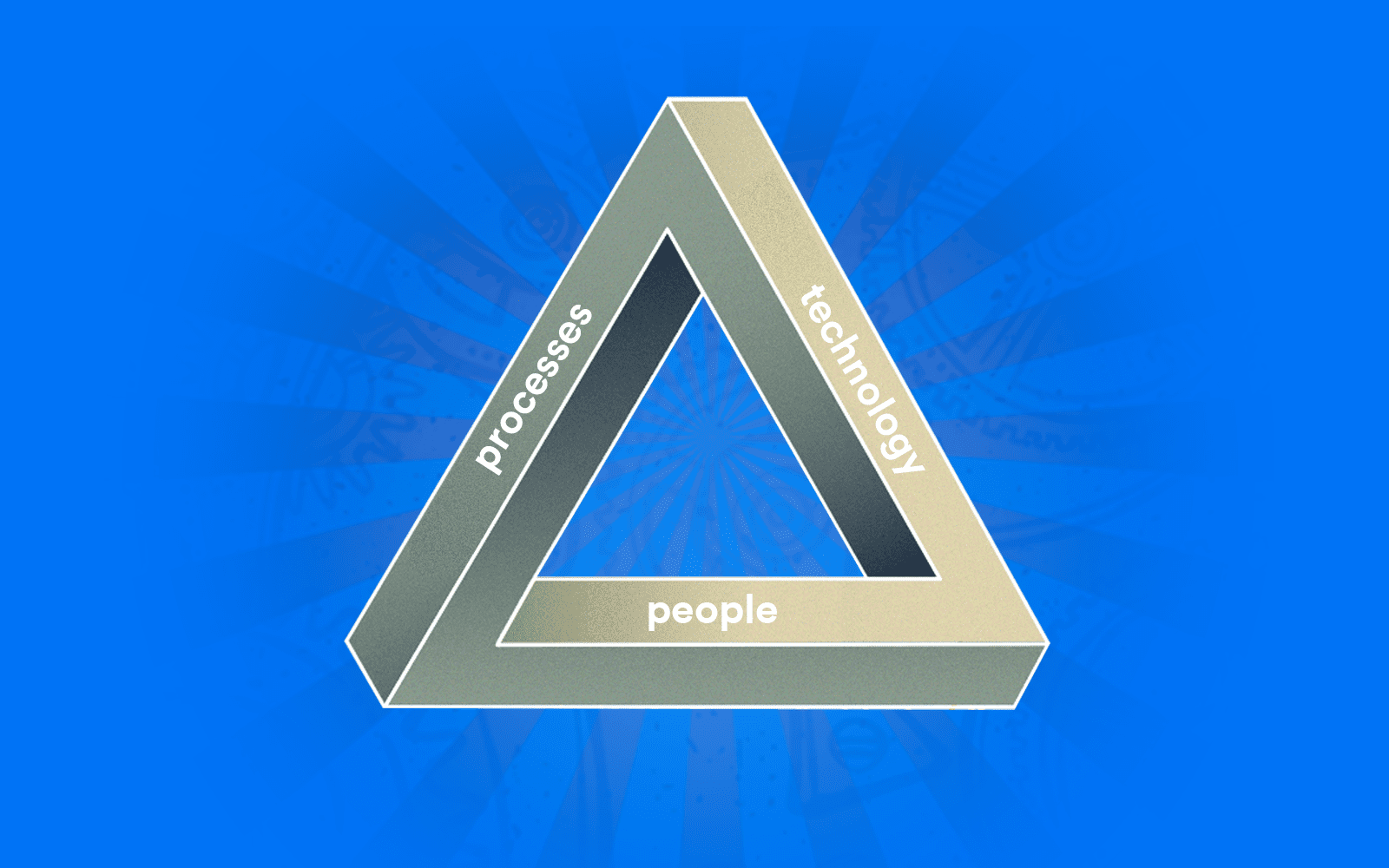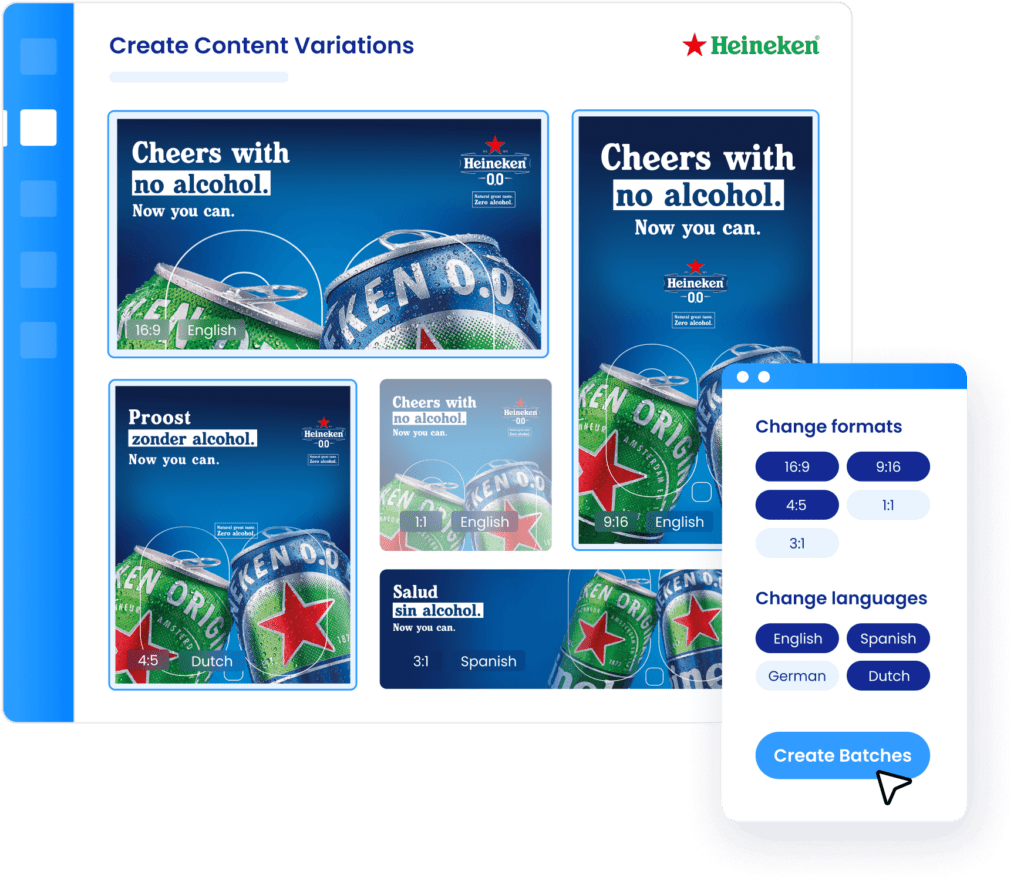In the expansive world of content, the importance of creative workflows often gets overshadowed. Given that marketing and design significantly influence the success path of a campaign, having robust processes at every stage is non-negotiable. We’ll delve into the pivotal role of creative operations, courtesy of valuable insights from operations managers at Team ITG, to help brands seamlessly navigate the turbulent waters of high content demand.

What are creative operations?
Commonly referred to as “creative ops,” creative operations embody a brand’s blueprint to align its resources and assets efficiently, streamlining processes and enhancing performance. It’s about introducing structure to the creative process within an organisation, propelling the creative team to move faster and deliver superior output.
Key responsibilities involved in creative operations include:
- Defining and improving creative processes within your company
- Identifying and bridging technology gaps that hinder your creative team’s productivity
- Optimising creative processes for consistently high-quality output
- Laying down clear metrics and KPIs to gauge the success of creative initiatives
Creative operations is a function that is uniquely positioned to solve certain challenges for rapidly scaling organisations, and that works within, alongside and sometimes outside of the established organisational structure of a company.
“Creative operations works best when it’s complemented by a strong and well-defined company culture. When you have a culture that is outwardly positive in its approach to automation and creative operations, everything will start to fall into place.”
Connor McDermott, Digital Operations Manager at Inspired Thinking Group (ITG)
Creative operations come into play particularly for organisations facing rapid growth, helping them overcome inherent challenges. A positive company culture open to automation and creative operations can significantly streamline operations and boost productivity.
Lisa Calgaro, Creative Operations Manager at global creative agency Wieden+Kennedy, suggests that creative operations facilitate a seamless connection among all departments partaking in a creative initiative, ensuring fluid processes, effective cooperation and successful outcomes.
What is the point of creative operations?
> Creative operations is a function that is uniquely positioned to solve certain challenges for rapidly scaling organisations and processes.
> With the higher demand for creative assets, a big aspect of producing content at scale is getting organised across teams, departments and even countries.
> To do this, look at creative operations as three pillars: people, processes and technology. Ensure seamless alignment between marketing and creative teams, and the processes they follow, and implement technology to do the heavy-lifting.
Purpose of creative operations
Creative operations serve a crucial role in a world grappling with escalating demand for creative assets. It helps foster organisation across different teams and departments, even across countries, forming the backbone for producing content at scale.
Three pillars form the foundation of creative operations: people, processes and technology. By aligning these three pillars, your team can ensure smooth operations between marketing and creative teams. This leads to the successful implementation of technology to take on more substantial workloads.
The intricacies of creative operations and project management
Creative operations bear a strong resemblance to project management when applied to creative projects and initiatives. The crucial point of difference lies in the focus on continuous improvement in creative operations management. In contrast, project management generally oversees what’s already in motion, maintaining the status quo.
Creative operations departments often find themselves navigating a maze of challenges brought about by increasing demand for creative assets, convoluted processes and compliance necessities. However, implementing long-lasting, scalable solutions at an early stage can bypass such impediments and retain brand consistency as the organisation scales.

Three pillars of creative operations: People, processes, technology
The creative operations framework leads a way forward to committing to continuous improvement in the workflow system that underpins the creative activities of your team.
People
People: Getting all stakeholders on the same page is crucial in a well-orchestrated creative operations setup. This alignment needs to be intact regardless of the organisational structure your brand follows, as only then can we expect timely content delivery.
Processes: Introducing an efficient creative operations process can help in structuring the advertising briefs handed over to marketing departments. This ensures that everyone is on board with the demands of the creative team, clear about messaging and aware of deadlines before the work commences.
Technology: In today’s multi-channel advertising reality, the right tool stack is invaluable in catering to multiple markets while ensuring compliance and brand consistency. Investment in technology that includes Creative Automation platforms, Digital Asset Management systems and other workflow management tools is a solid step forward.

Creative Automation in creative operations
Finding a place under the creative operations umbrella, Creative Automation platforms are designed to help global brands maintain stellar creative standards. They assist in centralising global ad production, cutting costs and accelerating go-to-market strategies.
What are centralised and decentralised workflows?
Centralised workflows: One centralised team is responsible for creating all the creative assets for all market and pushing these directly to their ad management platform and Digital Asset Management system.
Decentralised workflows: To enable local marketing, teams can alternatively push their assets towards their Digital Asset Management system and from there, stakeholders can individually and automatically make the required changes.
How Creative Automation fills the content gap and facilitates creation
Creative Automation brings efficient content creation, production and delivery under a single banner. This pivotal aspect of creative operations aids in the management of workflows and timelines for creative work, ensuring projects are delivered on time and in line with the brand’s essence.

Key takeaways
- If content production issues or challenges in maintaining a cohesive brand are steering chaos in your organisation, you need to strategise for managing high-volume, quality content.
- Though setting up effective creative operations can be time and labour-intensive, its correct implementation can elevate your team’s efficiency, scalability and quality to a whole new level.
Conclusion: Future-proofing your marketing and creative teams
Establishing efficient creative operations can be a whale of a task. However, the benefits of operational efficiency, scalability and quality it brings can far outweigh the initial resources invested. Clasping this as a key tool in your organisational toolkit helps to streamline and harmonise your workflows, people and deployed technology, making the process of content production sleek and unproblematic.
On the other hand, the pitfalls of an inefficient creative operation process can be detrimental, such as producing unoriginal or repetitive content that fails to resonate with your audience. The power of collaboration combined with the right technologies can make the creation of high volumes of premium content significantly simpler.
The key challenges highlighted earlier underline an existing trend that pinpoints the benefits of seamless workflows and cutting-edge technology. These tools empower your teams to create content that is meaningful and engaging, cutting through the ‘noise’ to deliver the ‘signal.’
On initial consideration, implementing creative operations might seem daunting, given the time and labour it demands. However, with proper deployment and effective utilisation, your department can facilitate your teams to reach new heights of efficacy, scalability and quality.
With automated processes and tools, you can facilitate a higher rate of content production without exhausting your creative personnel. Connor McDermott, Digital Operations Manager at Inspired Thinking Group (ITG), encapsulates this perfectly: “Automation, especially Creative Automation, frees our creative minds to work on more intricate and complex jobs.”
Having a process in place that enables greater volume of work without sacrificing quality or causing burnout becomes a compelling reason to incorporate and promote efficient creative operations.
Wrapping Up: The Need for Robust Creative Operations
The proliferation of creative content shows no signs of slowing down, putting pressure on companies to produce more content and do it faster. By implementing sound creative operations, brands can meet these growing demands, ensure output is consistent and high-quality, and avoid missteps that can harm a brand’s reputation.
Creativity is at the heart of any successful brand, and creative operations provide the structure needed to purvey it effectively. Ultimately, the role of creative operations extends far beyond simply ‘managing the creatives’—it’s a strategic function that, when executed effectively, fosters innovation, efficiency and success.
Note: This article evolved from a previous piece written by Andreea Serb, former content writer at Storyteq. It has been expanded and refined to bring further clarity on the pivotal role of creative operations in contemporary digital-first brands.